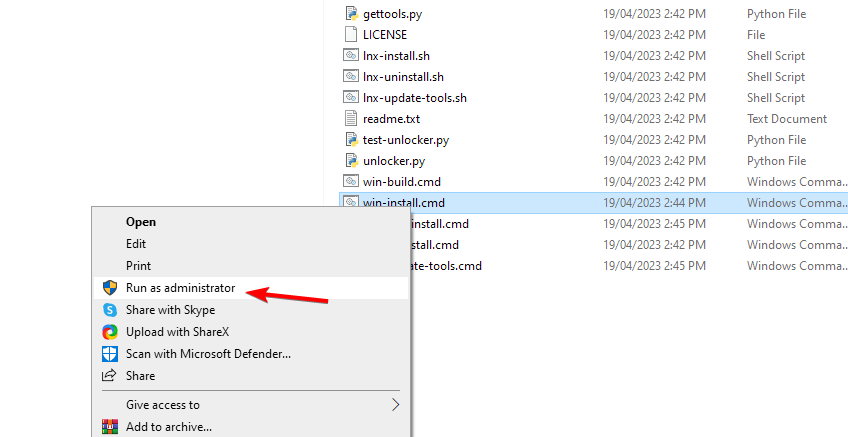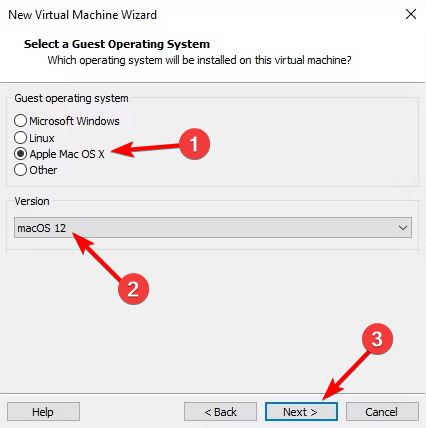GarageBand for Windows 10: How to Download & Install
To run GarageBand on PC, you need to use a virtual machine.
- GarageBand is a macOS exclusive, but you can run it on Windows 10 with a few tricks.
- Running a macOS in a virtual machine will give you access to all Mac applications.

GarageBand is one of the most popular tools to create music, and many are wondering if it’s possible to run GarageBand on Windows 10.
While you can always dual boot Windows and macOS, we found this process too complicated, so instead, we’ll use virtual machine software.
Before we start the guide, let’s answer some of the most important questions regarding GarageBand.
Is there a GarageBand for Windows 10?
No, this software isn’t available for Windows 10 or any version of Windows. GarageBand is a macOS and iOS exclusive, and it comes preinstalled with all Apple devices.
As such, there’s no Windows version available. But even if there’s no Windows version, that doesn’t mean you can’t run it.
How can I use GarageBand on Windows 10?
1. Download the necessary components
- Download macOS Monterey and extract the ISO file.
- Next, download and install VMWare Workstation.
- Lastly, download VMware Unlocker.
 NOTE
NOTE
2. Run the Unlocker
- Locate the VMWare Unlocker archive, and open it.
- Extract it to the desired location. The best option is on the same drive where VMware is installed.
- Locate the win-install file in the extract location. Right-click it and choose Run as administrator.
- Wait for the process to finish.
3. Create a new virtual machine
- Open VMWare Workstation.
- Open the File menu and choose New Virtual Machine.
- Select Typical (recommended) and then click Next.
- Next, choose I will install the operating system later and go to Next.
- Set the Guest operating system to Apple Mac OS X and Version to macOS 12. Lastly, press Next.
- Set the Maximum disk size to 50GB or more. Select Store virtual disk as a single file and click Next.
After doing that, we need to go and adjust the virtual machine settings.
4. Change the VM settings
- Locate the newly created VM and click on Edit virtual machine settings.
- Go to Memory and raise it to 4 or more GB.
- Next, go to Processors and set them to 2 or more.
- Lastly, go to CD/DVD (SATA) and select Use ISO image file. Click Browse and select the macOS ISO file that you downloaded.
5. Edit the VMX file
- Before closing the VMWare, look at the Virtual Machine Details section.
- Locate the Configuration file path and navigate to it.
- Close VMWare completely.
- Locate the macOS Monterey.vmx file, right-click it, and choose Open with. Select Notepad.
- Go to the bottom of the file and add the following code depending on your PC. Once you add the code, save the file.
For Intel
smbios.reflectHost = "TRUE"
hw.model = "MacBookPro14,3"
board-id = "Mac-551B86E5744E2388"
smc.version = "0"
For AMD
cpuid.0.eax = “0000:0000:0000:0000:0000:0000:0000:1011”
cpuid.0.ebx = “0111:0101:0110:1110:0110:0101:0100:0111”
cpuid.0.ecx = “0110:1100:0110:0101:0111:0100:0110:1110”
cpuid.0.edx = “0100:1001:0110:0101:0110:1110:0110:1001”
cpuid.1.eax = “0000:0000:0000:0001:0000:0110:0111:0001”
cpuid.1.ebx = “0000:0010:0000:0001:0000:1000:0000:0000”
cpuid.1.ecx = “1000:0010:1001:1000:0010:0010:0000:0011”
cpuid.1.edx = “0000:0111:1000:1011:1111:1011:1111:1111”
6. Install macOS
- Open VMWare and start the virtual machine.
- Select the setup language.
- Next, choose Disk Utility.
- Select VMware Virtual SATA Hard Drive Media and choose Erase.
- Set a new name for your drive, Format to APFS, and Scheme to GUID Partition Map. Click on Erase again.
- Exit Disk Utility and select Install macOS Monterey.
- Select the desired drive and click on Continue.
- Follow the instructions on the screen to complete the setup.
Once the macOS is installed, you’ll be able to access GarageBand from the virtual machine.
GarageBand isn’t available on Windows, so the only way to run it is to set up a virtual machine with macOS and run it from there.
If this seems like too much hassle, you can always use one of many available music production software for Windows.
Do you know a different way to run GarageBand on Windows 10? Share it with us in the comments section below.


















